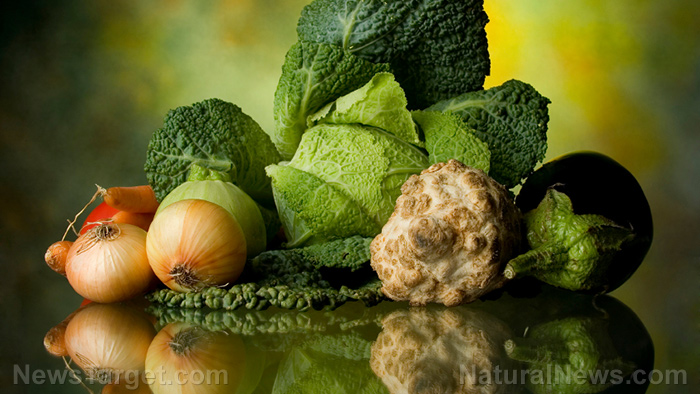Top 5 vegetables that are cheaper to grow than buy
04/30/2021 / By Divina Ramirez

Organic fruits and vegetables have become increasingly popular in recent years as consumers look for healthier options. Aside from being more nutritious than conventional produce, organic foods are grown without using chemical pesticides that are harmful to human health.
But organic foods don’t come cheap. They can put a serious dent in your wallet over time. The good news is, it’s easy to grow your own organic foods at home. Aside from saving money, you also get to eat healthy foods.
Here are five foods that will save you money in the long run when you grow them yourself:
1. Lettuce
Lettuce will produce crisp leaves throughout the entire growing season. It is also immensely cost-efficient since one pack of seeds can provide enough lettuce for up to five months. So when you consider the cost of buying fresh lettuce every week, you’ll realize that you can actually save a lot of money by growing your own lettuce.
Take note that non-heading lettuce varieties are much easier to grow than heading ones. To harvest, just cut what you need from the outer bunch of leaves. Harvesting this way allows the plant to keep growing.
As long as the weather is relatively mild, lettuce and other salad greens will continue producing crisp leaves. Lettuce is also a cool-season crop so it’s best grown in the spring and in fall in most regions.
2. Tomatoes
Tomatoes are ideal for small gardens because they grow vertically. The plants can take three months to mature, and they will keep producing tomatoes after that for the rest of the season. On top of this relatively quick growing period, tomato plants can produce fresh tomatoes for up to six years if properly cared for.
Cherry tomatoes, which provide an early harvest, are best enjoyed as a healthy snack with other fresh vegetable sticks and slices. Larger tomatoes are best used for canning and making sauces. Having tomatoes on hand in the winter can also save you money because the price of tomatoes tends to go up during the colder months.
3. Green beans
Green beans are much more prolific than the average garden crop. They usually yield up to five pounds of beans for every 10-foot row you’ve planted. Like tomatoes, green beans also grow vertically on a trellis.
Green beans only need to be sown once and will keep producing edible seed pods throughout the growing season. Plant green beans in the spring alongside bush beans, which grow close to the ground. By the time your bush beans are done producing pods, the pole beans will be ready for harvest.
4. Berries
Berries are harder to grow than the other foods on this list. But growing your own berries can save you loads of money because berries can get expensive, especially when they are not in season. (Related: How to grow blueberries in pots this summer.)
You’ll need to grow about three bushes, which will produce about five to seven pints of berries every year. They will also continue to produce berries for years, saving you money in the long run. Plus, berry bushes take up only a small amount of garden space, so they’re ideal for small gardens.
5. Asparagus
You’ll need to be more patient when growing asparagus since it can take up to two years to mature. That said, it will pay off financially. Each asparagus plant can produce tender spears for up to 20 years. However, asparagus can be difficult to grow for new gardeners. Read this simple guide before attempting to grow asparagus.
Growing your own produce allows you to save more money and eat more healthily. Get started by growing your own lettuce, beans, berries and more.
Learn more about cultivating a sustainable garden at HomeGardeningNews.com.
Sources include:
Tagged Under: cost-effective vegetables, food freedom, food supply, fruits, green living, home gardening, organic farming, organics, sustainable living, tips, veggie
RECENT NEWS & ARTICLES
COPYRIGHT © 2017 ORGANICS NEWS





















